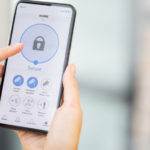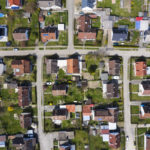The emergence of superfast 5G wireless could potentially widen buyers’ home searches and accelerate growth in real estate technology, panelists said Wednesday at a session called “How 5G Will Impact Where and How We Live and Work,” presented by the iOi Summit, during the virtual 2020 REALTORS® Conference & Expo.
5G is at least 100 times faster than 4G and promises to remove latency issues—that is, the delay in response time when transferring data. To put that into perspective, the time needed to download a 0.15GB PowerPoint presentation can decrease from 25.2 seconds in 4G to a mere 0.1 seconds in 5G, or from 8.6 minutes to download a 3GB movie in 4G to just 2.6 seconds in 5G. While 5G is already accessible in some major cities, it still isn’t widely available across the country but likely will expand to national coverage by the end of 2021, said Doug Zimmers, lead business development of AT&T’s 5G Center of Excellence.
5G could usher in development of many new real estate applications, such as in virtual reality, augmented reality, and smart-home development. Dan Weisman, director of emerging technology at the National Association of REALTORS®, also pointed to technology like drones that could use 5G so prospective buyers can easily view areas before traveling to them in person.
Weisman also said 5G could influence where people decide to call home in the future. He pointed to 5G’s ability to influence greater telehealth, possibly freeing some consumers from needing to live near a hospital. They could get instant remote access to doctors to monitor health conditions or change medications. Further, 5G could spark growth in autonomous vehicles, which also could allow people to live further out from city centers when they don’t have to worry about driving themselves.
“5G is the rebuilding of our global network,” Zimmers said. “It’s providing an environment to advance technology, leverage the expansion of bandwidth capabilities, and look at the reliability and the stability of millions of connected devices in small geographic areas. It’ll be the backbone of connectivity.”
Dan Swan, CEO of augmented reality company RealAR, predicts that 5G will help close the gap between smart homes, smartphones, and smart vehicles. “We’ll likely see all three of these things merge and integrate,” he said. “We definitely can’t do that without 5G.”
Melissa Andresko, chief corporate brand ambassador at smart lighting company Lutron, said 5G will allow the smart home to come to full fruition, connecting everything from lights to the doorbell to window coverings seamlessly. Lutron recently announced an alliance with Ring, a smart doorbell company. The new partnership will allow inside or outside lights to turn on when a homeowner’s specified actions are detected by their Ring camera or device. “Home is more important than ever now,” Andresko said. “We will likely include more of these devices in our everyday life to make life simpler and for peace of mind, but the installation process needs to be simple and allow for greater connectivity to other devices.”
In evolving the home-shopping experience, augmented reality could help buyers better visualize spaces they want to purchase. “In the pandemic, we’re seeing much higher demand for remote viewing of properties,” Swan said, adding that 5G will help accelerate augmented reality, allowing people to view properties in real time in 3D configurations via an app on a smartphone. The technology is already available through RealAR, an Australian-based startup, but further development and enhancements rely on faster connectivity.
“The lower the latency in any technology, the higher the engagement,” Swan said. The app can be used to turn floor plans into life-sized 3D homes viewed from a smartphone app, enabling buyers to peruse spaces in a virtual way either onsite or remotely.
Source: magazine.realtor












